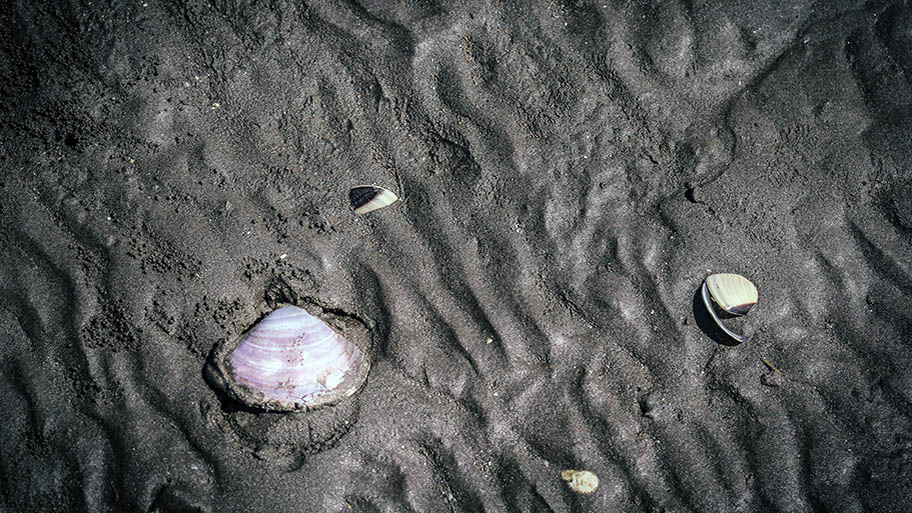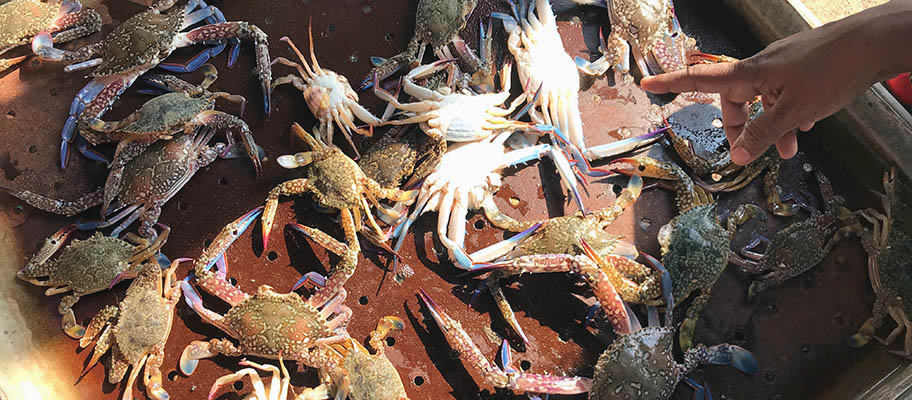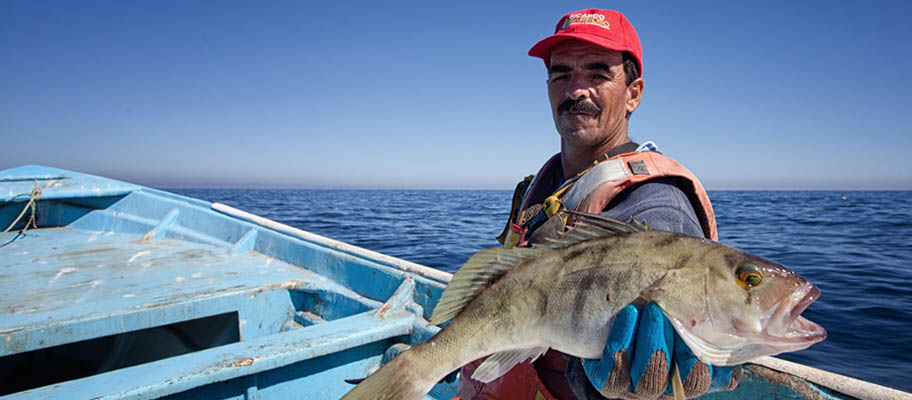From Bahamian spiny lobsters in the turquoise waters of the Caribbean to clams beneath the surface of velvety mudflats in Vietnam, the Global South is a geography that’s not only rich in marine life but also pivotal to changing the future of our oceans.

Clams targeted by an MSC certified fishery in Vietnam
Just last month, the United Nations (UN) published a devastating report about the state of the world’s biodiversity and within the same week announced a lack of global progress on the United Nations’ Sustainable Development Goals (SDGs) for 2030.
The outlook seems bleak and reinforces the urgency in improving the sustainability of fisheries worldwide. This can be challenging in the Global South for various reasons, including its susceptibility to climate change. However, there are reasons, documented in our 2019-20 annual report, to remain optimistic about the future and in particular, the achievement of SDG 14, Life Below Water.
Over the last three years, the MSC has seen a 71% increase in engagement with fisheries in the Global South, which is home to 97% percent of the world’s small-scale fishers and contributes approximately half of global fish catch. In 2019-20, the proportion of catch from MSC engaged fisheries in the Global South was 13% - that’s up by nearly a quarter on the previous year.
How has this growth been achieved? On opposite sides of the world, two of our team members have been working hard to engage more fisheries.
On the path to sustainability in India
From skipjack tuna within the Lakshadweep archipelago to oil sardines in Kerala, the waters surrounding India are home to more than 300 fisheries. India is the fourth biggest seafood exporter in the world, it is therefore crucial for oceans and the economy that its fisheries are managed sustainably.
The MSC hosted a workshop in 2018, convening 300 stakeholders from across India, including government agencies, scientists, processors, NGOs and traditional and industrial fishers. One important outcome from this meeting was the formation of the Sustainable Seafood Network of India, a national platform to promote seafood sustainability throughout India.
Through the platform, several seafood processors joined together to fund assessments and fishery improvement projects for shrimp and cephalopod fisheries in Kerala and a blue swimming crab fishery located in Palk Bay, between India and Sri Lanka. Consequently, these Indian fisheries have made significant progress on the pathway to sustainability.
“We are increasingly seeing fishers coming forward who want to safeguard the sustainability of their own fisheries,” states MSC India consultant Ranjit Suseelan, “but without the support of the big export companies, they are dependent on external funding.”
 Blue swimming crab caught by a fishery in Tamilnadu, India, which is taking part in a fishery improvement project © Sustainable Seafood Network of India
Blue swimming crab caught by a fishery in Tamilnadu, India, which is taking part in a fishery improvement project © Sustainable Seafood Network of India
As the cost of bringing in international auditors was identified as a barrier to proving fisheries’ sustainability, the MSC is working to develop this capability within India. Four women completed auditor training during 2019, one of whom is now fully qualified to conduct MSC assessments.
“Pre-assessments for 11 species were carried out in 2019, and the fisheries are now strengthening areas such as stock assessments, harvest control rules and management. It is a long process, but we hope these fisheries could be carrying the MSC label within the next three or four years,” concludes Suseelan.
Progress towards sustainability in Latin America
The largest fishery in the world lands up to 6 million tonnes of anchovy in a typical year. Most of the Peruvian Anchoveta fishery’s catch is used to make fishmeal and fish oil, some of which is used in aquaculture, feeding fish species highly valued by consumers.
The Peruvian anchoveta fishery has launched two fishery improvement projects (FIPs); multi-stakeholder initiatives that aim to help fisheries work towards sustainability. The plans include an evaluation of how the fishery impacts other species within their fishing grounds, through an on-board observer program.
“It is crucial that the Peruvian anchoveta fishery can demonstrate it is operating to the highest standards,” says Cristian Vallejos, MSC Latin America Director. “It is hoped that the projects will prepare the fishery for MSC assessment.”
It’s not alone, a number of other fisheries involved with improvement programs in Argentina, Ecuador and Uruguay, are also close to initiating MSC full assessments.
 Barred sand bass caught by Mexican fishery in pre-assessment with the MSC Fish for Good project.© Carlos Aguilera
Barred sand bass caught by Mexican fishery in pre-assessment with the MSC Fish for Good project.© Carlos Aguilera
“We are proud of our growth in Latin America in the last financial year 2019-20. We have 16 certified fisheries and our volume of MSC certified seafood has more than doubled, from around 400,000 to 900,000 tonnes,” explains Vallejos.
Most of this growth is down to the certification of a fishery in Chile which produces up to 600,000 tonnes annually of sustainably caught jack mackerel. A portion of the catch is sold as low-cost canned food in Chile, some is exported to West Africa and the remainder is turned into fish meal.
Adding to the achievements of fisheries and businesses in Latin America during 2019-20, is the certification of Chile’s southern hake fishery.
“The fact that the Chilean southern hake has been MSC certified provides tremendous support for the industry and for this product. Its main market is in Spain, where the certification was very well received by importers, distributors and retailers,” says Sebastián Pillado, Chilean Trade Commissioner for Spain – ProChile.
Mexico has also reached an important milestone; a quarter of its catch is now certified sustainable. The next goal is to build demand for sustainable seafood in the country and work with large retailers to align their corporate social responsibility policies with MSC certification.
Achieving UN Sustainable Development Goal (SDG) 14
The work carried out by MSC certified fisheries and businesses is recognised by the UN as an important tool in achieving SDG 14; which requires countries to conserve and use the oceans sustainably by 2030 and set a target to end unsustainable fishing by 2020.
![]() However, UN data published in September 2020 shows that the global community has missed the ambitious target to end unsustainable fishing by 2020 and in many ways, overfishing is worsening.
However, UN data published in September 2020 shows that the global community has missed the ambitious target to end unsustainable fishing by 2020 and in many ways, overfishing is worsening.
Evidence of the scale of the challenge ahead and the specific importance of supporting sustainable practices in the Global South were highlighted in the UN’s Global Biodiversity Outlook report, also published last month, which revealed that none of the global targets set 10 years ago have been fully met. The need for all fish stocks to be managed sustainably is now urgent.
The MSC set a bold target to have fisheries representing 30% of global marine catch engaged in our program by 2030, reflecting the urgency of delivering SDG 14 and the mounting pressure on our oceans. As of 2019-20, 17.4% of global marine catch was engaged with the MSC. To reach our ambitious target, the MSC provides tools, expertise and funding to fisheries not currently operating at the level of the MSC Standard for sustainable fishing, aiming to support their progress on their pathway to sustainability.
“The coming decade will be pivotal,” states Rupert Howes MSC Chief Executive Officer. “We have a route map agreed by 193 nations to fulfil the Sustainable Development Goals by 2030. Let us use this opportunity to redouble our efforts and deliver.”


.tmb-labelhome.jpg?Culture=en&sfvrsn=dbdf5d6b_1)